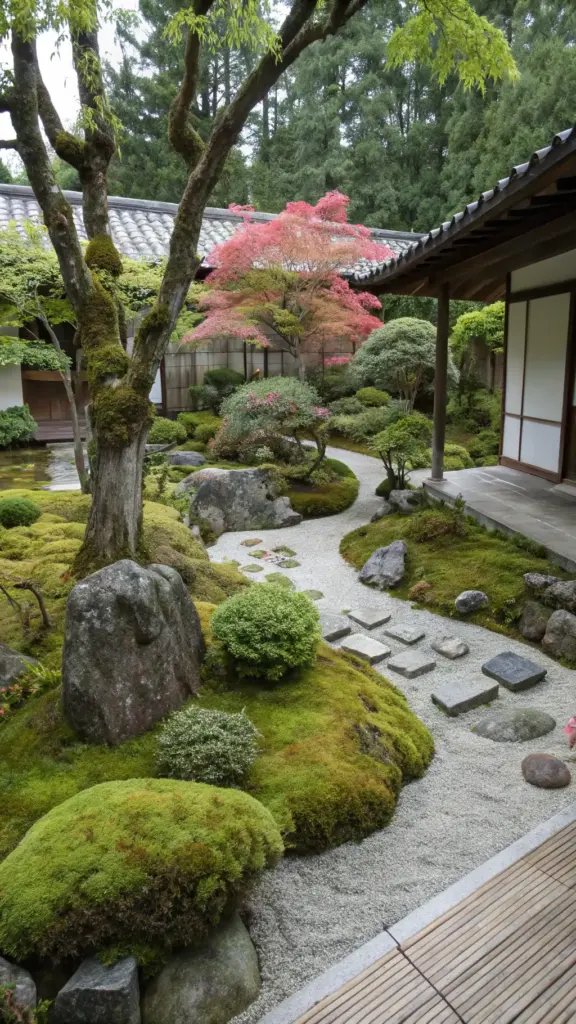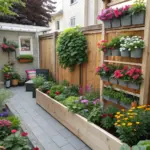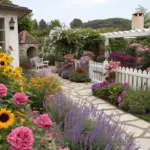2. Zen-Inspired Rock Garden

There’s something about a Zen-inspired rock garden that just feels… right, you know? It’s like stepping into a space where time slows down and all the noise fades away. I’ll never forget the first time I created one of these gardens—it was for a tiny backyard in San Francisco-Oak-San Jose, and the client wanted a spot to meditate. At first, I was nervous. How could I turn such a small, awkward space into a calming retreat? But once I incorporated Japanese maple trees, lush moss, and carefully placed stones, it transformed into this serene little haven. Let me tell you how you can do the same.
The Magic of Japanese Maple Trees
If you’re looking to add a touch of elegance to your Zen garden, Japanese maple trees are where it’s at. These beauties have this incredible way of softening the harsh lines of rocks and stones with their delicate leaves.
I remember one project where I used a dwarf variety called Acer palmatum ‘Shaina’. The deep red leaves popped against the pale gray stones, and honestly, it felt like something out of a dream. The key is to place the tree off-center—it’s an age-old design principle in Japanese gardens that creates balance without being too symmetrical. Oh, and don’t forget to mulch around the base with fine gravel or moss. It keeps weeds at bay and adds that polished look.
Why Moss Is Your Best Friend
Now, let’s talk moss—the unsung hero of any Zen-inspired space. This little plant might seem low-key, but it’s a total game-changer. It gives your garden this soft, velvety texture that contrasts beautifully with the hard edges of stones.
Here’s the thing: moss doesn’t need much to thrive. In fact, it loves shade and moisture, which makes it perfect for those damp, foggy mornings in San Francisco-Oak-San Jose. One mistake I made early on was trying to grow moss in full sun. Big oops! Lesson learned: stick to shaded areas, and if you’re starting from scratch, try blending moss with yogurt (yes, yogurt!) and spreading it over rocks. Sounds weird, but it works like a charm.
The Art of Stone Placement
Let’s get real for a second—stones are the backbone of any Zen rock garden. But here’s the kicker: it’s not just about tossing a few rocks around. The placement has to feel intentional, almost like each stone has its own purpose.
When I’m designing these spaces, I like to use larger stones as focal points and smaller pebbles to fill in gaps. Think of it like creating a natural flow—your eye should glide effortlessly across the space. And don’t be afraid to play around with shapes! A mix of rounded river rocks and jagged slate can add depth and interest. Just make sure everything feels balanced—you don’t want it to look cluttered.
Creating Your Meditation Corner
The best part about a Zen-inspired rock garden? It’s perfect for carving out a little meditation nook. Add a simple wooden bench or even just a flat stone to sit on, and you’ve got yourself a peaceful escape.
One client told me her morning routine completely changed after we installed her garden. She’d sit there with her tea, listening to the birds chirp, and said it felt like the world stopped spinning for a moment. Isn’t that what we all need sometimes?
Ready to take your outdoor space to the next level? Click the next button below to explore how to create a whimsical Cottagecore Wildflower Patch. Spoiler alert: it’s all about embracing wild, untamed beauty. You’re gonna love it!









GIPHY App Key not set. Please check settings